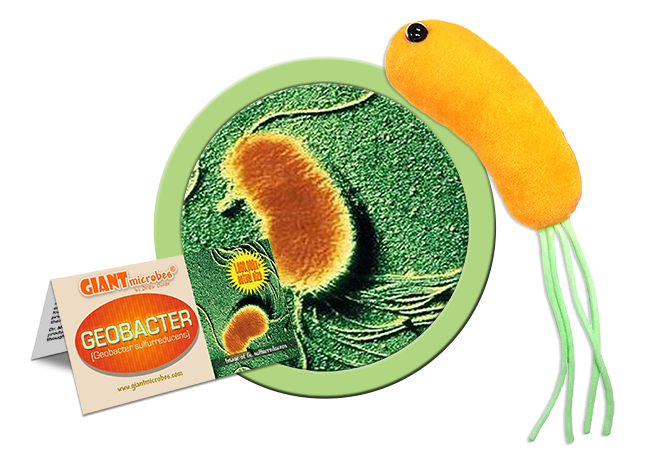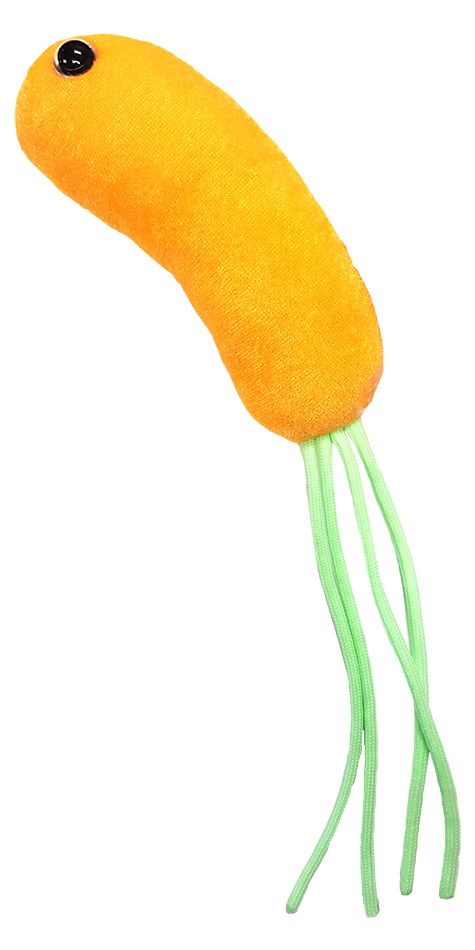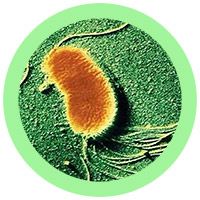Geo, the Electric Microbe (Geobacter sulfurreducens)
Product Details
Additional Information
| Sizes | Giantmicrobes are based on actual microbes, cells, organisms and other critters, only 1,000,000 times actual size! Gigantic (GG) 16-24" XL (XL) 10-15" Original (PD) 5-8" Keychain (KC) 2-4" with clip |
|---|---|
| Materials | Plush from all new materials. Stuffed with polyester fiber fill. Surface washable: sponge with water & soap, air dry. |
| Packaging | Each plush microbe includes a printed card with fun, educational and fascinating facts about the actual microbe or cell. |
| Safety | Every product meets or exceeds U.S. and European standards for safety. For ages 3 and up. |
All about Geo, the Electric Microbe (Geobacter sulfurreducens)
FACTS: Geobacter is a species of environmentally friendly bacteria with some incredible abilities. Geobacter are nicknamed “iron breathers” since they respire iron compounds. They actually crave habitats where there is no oxygen such as deep underground or within ocean sediments.
Perhaps even more amazing, after Geobacter munch on sugars and nutrients they release electrons through conductive appendages called “nanowires”. Geobacter can be harnessed as “microbial fuel cells” to generate electricity from soil and food waste.
In fact, they can link together with neighboring Geobacter buddies and transfer electrons through each other. Scientists have found vast communities of Geobacter on the ocean floor, all connected and transferring electrons in a vast network. And there’s more! These wonderful organisms can even help clean up pollution by metabolizing petroleum, uranium and other toxic waste.
| Name | The root “geo” means relating to the Earth. These bacteria thrive and produce their energy from the Earth itself. The suffix “bacter” simply means that it correlates to bacteria. The word geobacter sums up this species nicely. |
|---|
| Actual Size | 0.6 x 2.0-6.0 mm, rod shaped with a flagellum (tail-like structure). |
|---|
| Where It Lives | Found in sedimentary environments where there is a lack of oxygen, this species can function anaerobically. It is found in river beds, geological compounds, and a variety of environments. |
|---|
| History |
1987: This species of bacteria was first isolated by Derek Lovley in the Potomac River near Washington D.C. It was discovered in sand sediments. Lovley and his team researched and publicized the utilities of geobacter. It has the capacity to convert organic compounds to carbon dioxide. 2010: Geobacter was used for environmental restoration, energy harvesting, and even to help clean up after the Deepwater Horizon oil spill in the Gulf of Mexico. |
|---|
| Fascinating Facts |
They have the ability to undergo interspecies electron transfer, allowing the microbes to harness food sources that none can access alone. They can work as one, thriving system. Geobacter is the first organism found to respire on organic compounds using iron oxide as an electron acceptor. They have capacity to remove radioactive metals from ground water and gain electricity from mud and other inorganic waste matter. |
|---|






